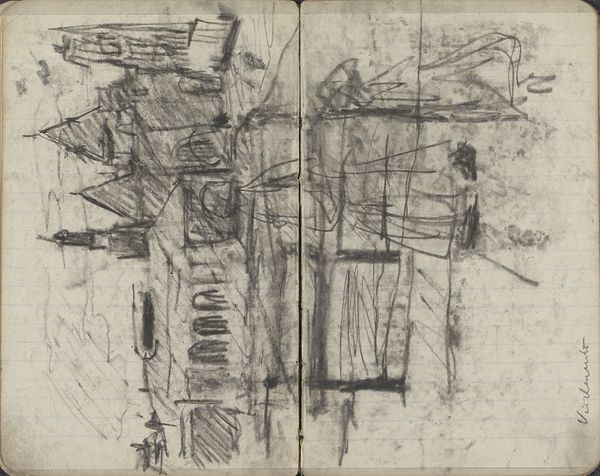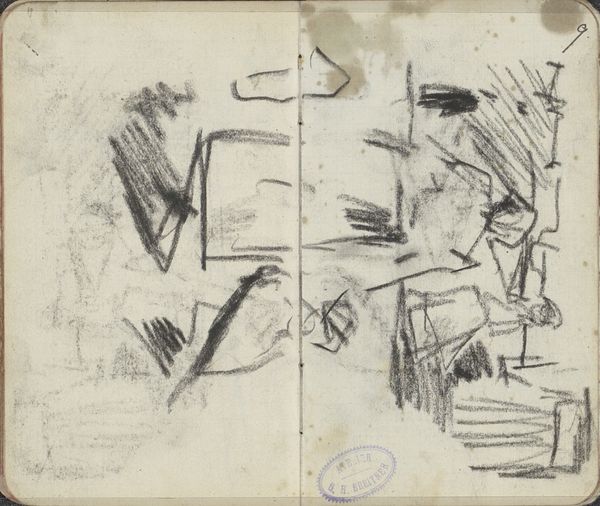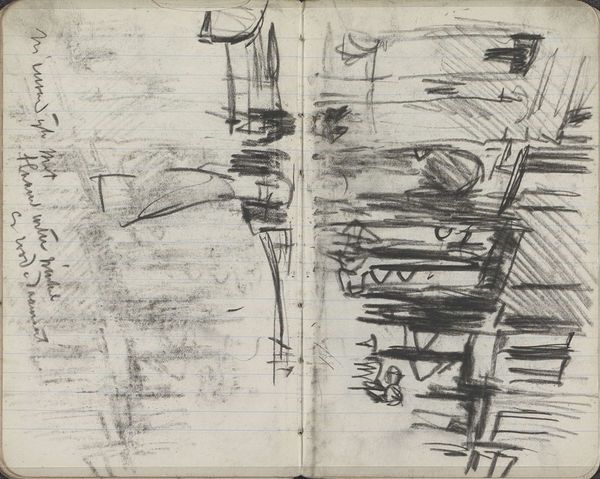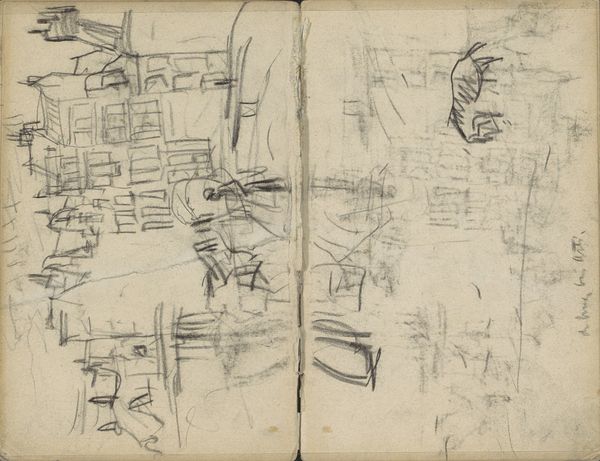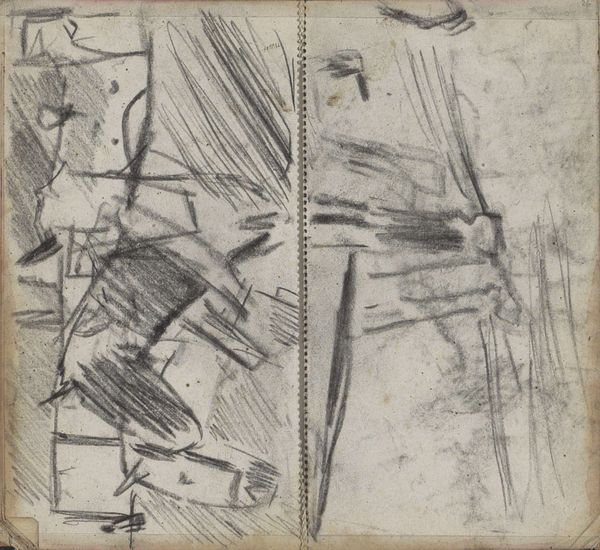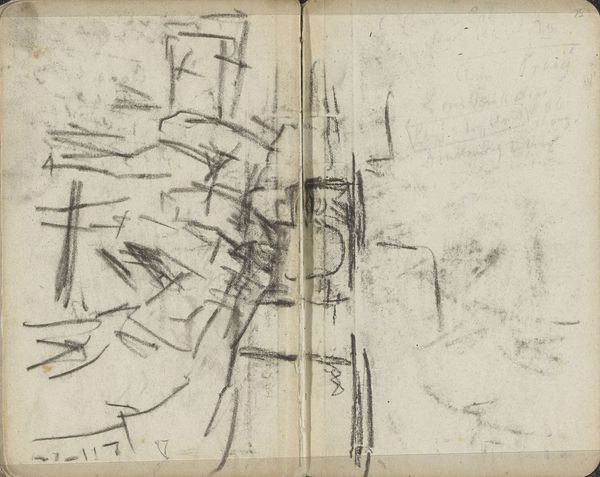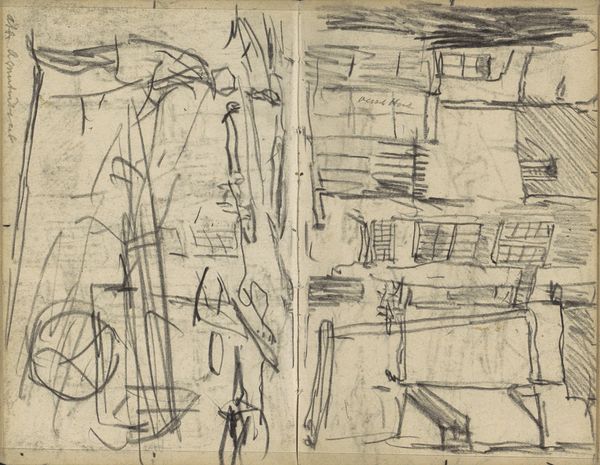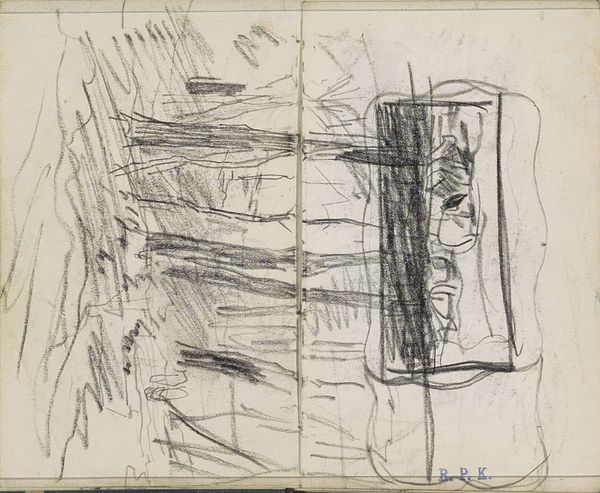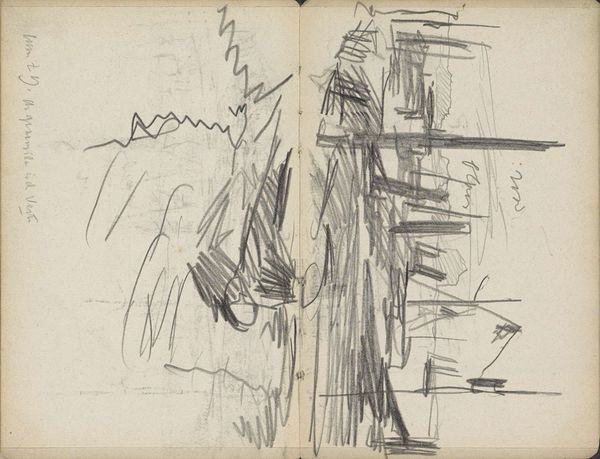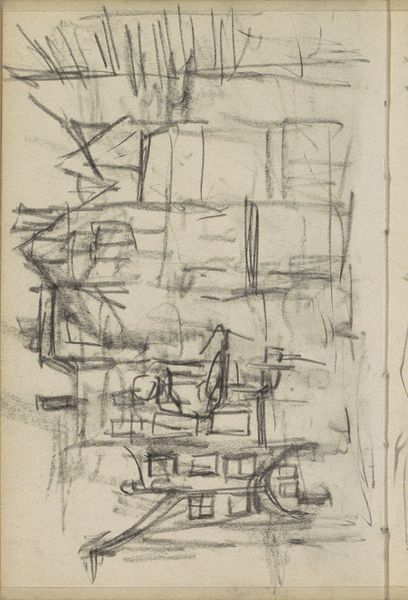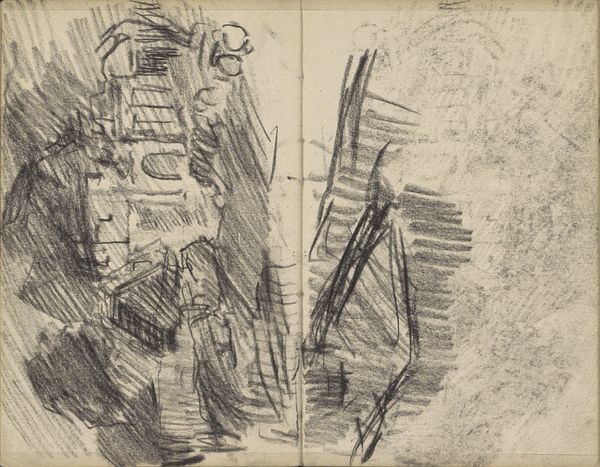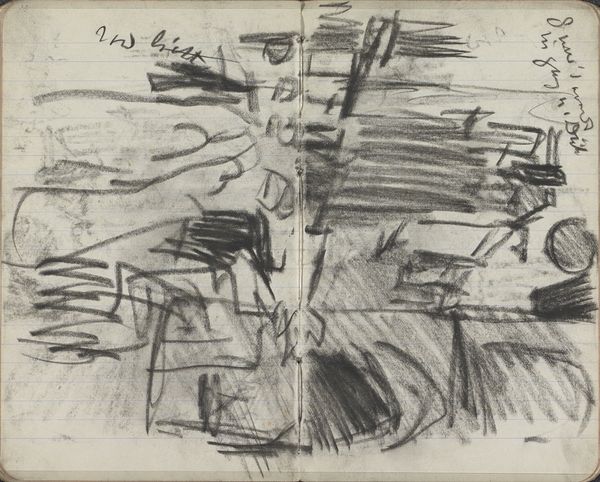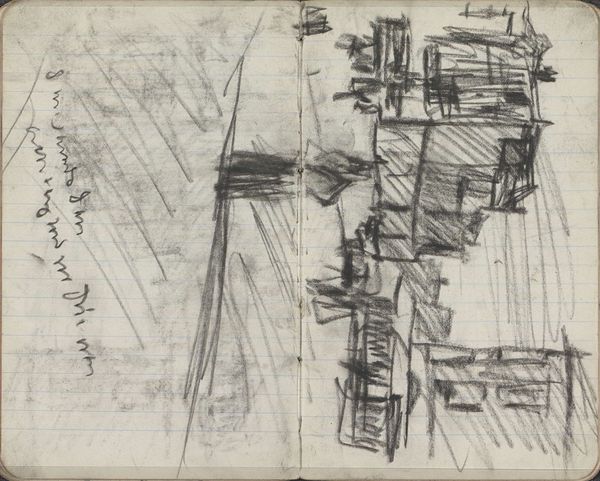
Copyright: Rijks Museum: Open Domain
Curator: Immediately I notice the sketchiness, a feeling of transience. There’s a bustling quality implied despite the stillness of the graphite on the page. Editor: That's a fitting observation for this drawing, “Vrouwen op straat,” or “Women on the Street,” created around 1896 by George Hendrik Breitner. It resides in the collection of the Rijksmuseum. You can see it was made with graphite and pen. Curator: The women themselves are abstracted into forms; repeated vertical lines become legs, darker scribbles massed for hats and shawls. It reminds me of societal limitations placed on women at that time, a blurring of individual identity forced through prescribed gender roles and their reduced social and political mobility in public sphere. Editor: The recurring symbol of the street has such charged historical meaning too; it represents more than physical passage; its a crucial social stage for political demonstrations, collective grief, and more mundane forms of daily encounters across divides. Do you think the obscured nature of the figures intentionally speaks to themes of urban anonymity? Curator: Perhaps. Consider how women particularly negotiated newly forming, modern urban spaces in late 19th century Amsterdam: did public anonymity increase their individual autonomy, or subject them to scrutiny? Was access really granted? The quick strokes deny distinctiveness. It makes one question the apparent nonchalance of this landscape. Editor: That reminds me how certain elements and motifs, like streets and the faceless crowd, acquire complex cultural weight in fin-de-siecle art. It mirrors that sense of alienation from the self that often pervaded through that time, the sense of not truly knowing those around us and perhaps not even truly knowing the inner self! Curator: So, you see here something almost primal in this anonymity? An atavistic fear of not belonging within an expanding and changing industrial society? It raises so many questions about subjectivity and social roles for both men and women as well. Editor: Exactly! The very act of recording everyday life – street scenes – it’s the beginning of photography taking root! Perhaps it suggests an artistic yearning to understand, to seize the moment right before everything changed. What else catches your attention, as we think of the cultural impact that these quick sketches leave for modern eyes? Curator: Well, what stays with me is the density—both in the technique and how we receive it now, with the benefit of hindsight. Breitner’s impression captures the start of societal and aesthetic revolutions. Editor: Yes, it offers a glimpse of both past ways and future change. Thank you for pointing those nuances out.
Comments
No comments
Be the first to comment and join the conversation on the ultimate creative platform.
